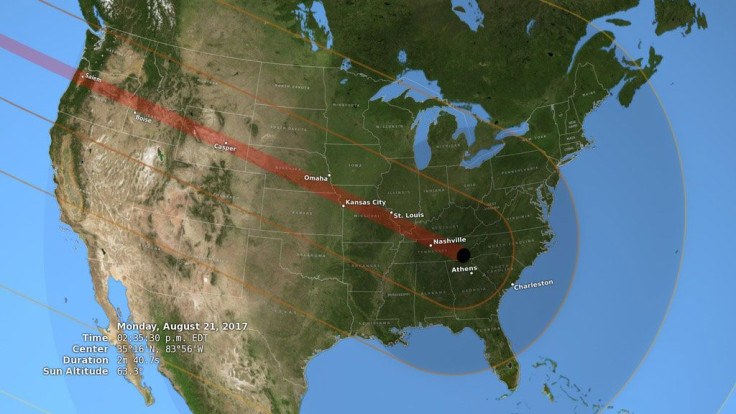Solar Eclipse Travel 2017: High Flight Prices, Traffic Expected

The total solar eclipse that will be traveling across the country on Aug. 21 is the perfect excuse to plan a summer vacation, something many people have already done. But if you’ve waited until now to plan your eclipse vacation and you were hoping to get a flight to one of the states that will experience totally, get ready to pay. Roundtrip airfare, arriving the day before the eclipse and leaving the day after, is costly, reported the Washington Post.
Millions of people are expected to travel to the 14 states where the eclipse will be visible in totality. Filling hotels, Airbnbs, campsites and the couches and guest bedrooms of friends and family in the path of the eclipse. They all have to get there somehow.

Read: Eclipse 2017 Eye Health, What Happens If You Look At Sun, Eclipse
The Post plotted flights out of Hartsfield-Jackson International Airport in Atlanta, the busiest in the country, to get a feel for flight prices to totality states. The most expensive flight was to Jackson, Wyoming, at more than $1,400 round trip. The high price gets you a seat on a flight right to a point of totality, but no checked baggage. Flights to other locations are sold out.
A Google Flights search for the same days, but out of New York City, an area that will only get a partial eclipse, showed similar expensive flights. The flight to Jackson was prices at $1,360 while a flight to Charleston, South Carolina, where the eclipse will leave the mainland from was priced at $999.
Additionally, the Post found that the further the distance you would have to drive from an airport near totality the lower the cost of the flight. If you want to check what the eclipse will look like from where you live, you can use a simulator online. A total solar eclipse occurs when the moon moves between the sun and the Earth blocking the sun’s light. But the shadow doesn’t always end up in the United States, or even on Earth.
Read: Why Aren’t Solar Eclipses More Frequent?
If you want to drive instead, plan for traffic and congested roads of similarly-minded eclipse chasers. News outlets across the country have been covering the influx of traffic expected in states like Oregon, Wyoming and South Carolina. No matter how you get to the eclipse, be sure that you have the proper protection for your eyes or if not, that you don’t look at the eclipse when the sun is out and shining. The only time it is safe to view the eclipse is when totality is reached.
The next total solar eclipse to shade the U.S. will occur in 2024. Instead of traveling West to East it will start in Texas and travel northeast up to Maine, says NASA. This eclipse will cross the path of the Aug. 21 eclipse around Carbondale, Illinois. If you’re hoping you can just wait at home until an eclipse crosses over you’ll be waiting a while. It’s estimated that it will take 1000 years for every location in the lower-48 states to fall under the shadow of a total solar eclipse, says NASA.
© Copyright IBTimes 2024. All rights reserved.




















